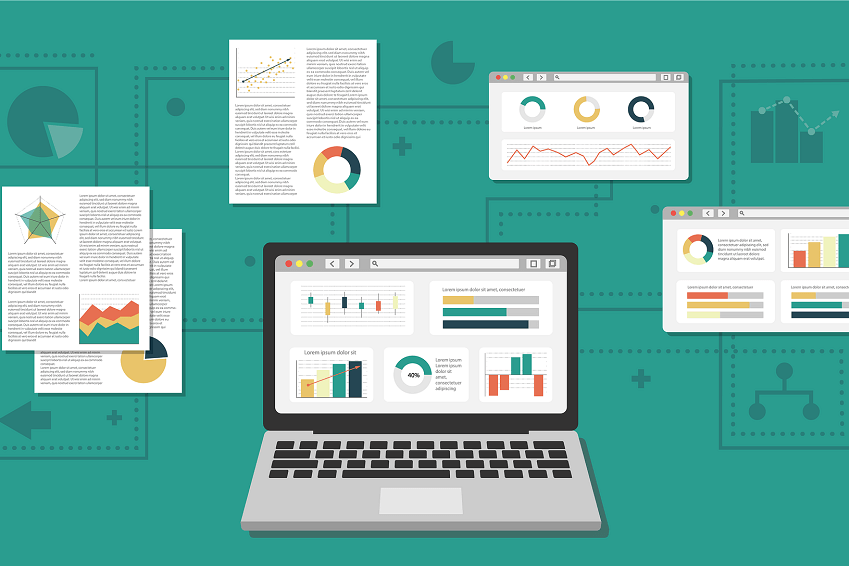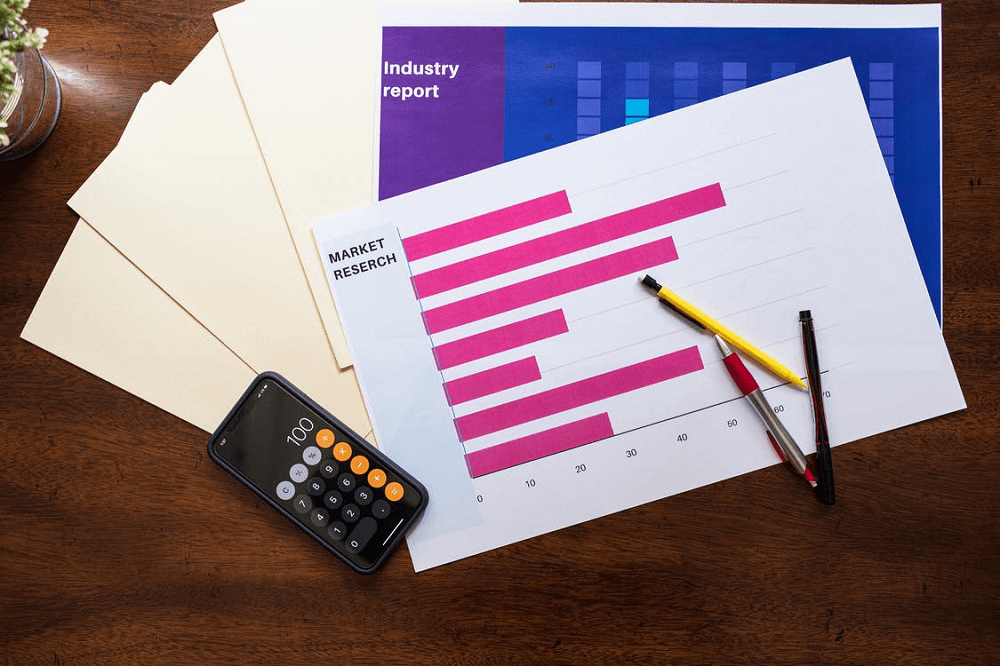
Last updated: September 03, 2022
Customer Lifetime Value (CLV) is essential for understanding your SaaS business's performance and long-term potential.
Sales and revenue figures aren’t the only metrics you should use to measure your online store’s success. This is because they don’t always provide a complete picture of your business’s future.
It is widely known that recurring revenue is the foundation for SaaS subscription-based business models. But unfortunately, most SaaS businesses fail because they lose customers faster than they win new ones. That’s why it’s absolutely crucial to retain customers for an extended period - called the customer lifetime.
According to a 2019 report from Criteo, marketers still seem to struggle to leverage customer lifetime value to its full potential because they don’t have the right tools to analyse and understand the data.
Understanding the average customer lifetime value can help any SaaS business develop a marketing strategy optimised for acquiring new customers and retaining the existing client base. In addition, the CLV also ensures that profit margins are maintained and your business model is viable over the long term.
This article will cover everything you might need to know about Customer Lifetime Value. It will explain what it is, why it’s important, how to calculate it, and how to improve it.
Table of contents
- What is Customer Lifetime Value?
- Who should measure lifetime value?
- How to calculate the CLV of your SaaS customers
- How to increase CLV
- Other SaaS metrics to keep an eye on
- Conclusion
What is Customer Lifetime Value?

Customer lifetime value (CLV) is a key SaaS metric that displays how much revenue the average customer will bring in during their relationship with your service.
It measures the profit your business makes from any given customer over the entire period they are subscribed, and it represents the customer’s value to the business over that period.
CLV can sometimes be referred to as Customer Lifetime Value (LTV) or Customer Lifetime Value (CLTV).
It is a great metric to track because it can help move your thinking from being transaction-based to a long-term value-based subscription model optimised for repeat business.
In a nutshell, it is the gross profit generated from a single customer over the entire time they do business with a company. It helps show a customer's value throughout their lifetime rather than just focusing on their first purchase.
Customer Lifetime Value (CLC) is often considered the foundation of subscription-based business models. This is because the longer a customer stays loyal and makes purchases, the bigger the lifetime value becomes.
Types of Customer Lifetime Value
Generally speaking, there are two different types of Customer Lifetime Value that you can calculate. Both of these models provide different outcomes depending on whether the business is looking at pre-existing data or trying to predict the future behaviour of customers.
The first model is the Historical Customer Lifetime Value. This calculates CLV depending on what the customer has spent with the business. Simply dividing the total revenue by the number of months in a customer’s lifetime and multiplying by 12 provides the historical CLV for a specific customer:
Historical CLV = (Total revenue/months subscribed) * 12
However, this method does not consider customer behaviours, variations, and preferences.
The second type of model is the Predictive Customer Lifetime Value. This method uses artificial intelligence and machine learning to combine customers’ historical behaviour and predicted retention to estimate CLV. It takes into account customer trends and behaviours throughout their lifetime.
Why you should care about CLV

Improving the CLV increases the overall profitability of a SaaS company. This is because most of the profits in a SaaS business come from repeat subscription payments, not just one-off single transactions.
Measuring customer lifetime value helps to provide a reliable business viability measure. A high CLV shows a market fit and brand loyalty, meaning your customers resonate with your product. It also helps to estimate how well your company is likely to perform in the future.
It is crucial to know your CLV because it dictates how much you should be spending to acquire customers - this is known as the Customer Acquisition Cost (CAC).
Knowing the CAC and CLV will help you understand which customers to focus on acquiring. If you don’t know how much revenue each customer generates, you have no idea how much to spend to acquire them.
Furthermore, even if the customer acquisition cost exceeds the value of their first purchase, knowing their lifetime value should allow you to make future predictions about sustained profits, helping to achieve a steady growth curve.
It is also important as it drives repeat sales and revenue. It pinpoints customers that spend more in your store and helps them understand what products they enjoy. It can also help to identify potential issues early so that you can boost customer retention.
Customer Lifetime Value can also help to boost loyalty because the tactics employed to increase CLV typically improve customer support, products, and loyalty programs.
Marketing impact
The Customer Lifetime Value directly impacts your marketing spend as it dictates how much you can spend to acquire new customers in your marketing campaigns.
By measuring the Customer Lifetime Value to Customer Acquisition Costs, companies can measure Return on Investment (ROI) for every new customer and help to set marketing budgets.
You always need to spend money to acquire new customers and keep hold of the existing ones. Research suggests that acquiring new customers can cost as much as five times more than retaining existing customers - so you must hold onto your loyal customer base.
A clear Customer Lifetime Value sets the maximum budget for acquiring new customers and maintaining the relationships with existing ones.
If you understand exactly how much customers spend, it makes it easier to tailor marketing efforts to them. It will also help you know which customers are most profitable and help you develop ideas to retain them. In addition, the Customer Lifetime Value should also allow you to figure out ways to increase revenues from less valuable customers.
Who should measure lifetime value?

Businesses with high transaction rates and a large customer base should calculate LTV.
Typically, it should be the job of the Chief Finance Officer (CFO) to calculate LTV and any other key financial metrics.
On the other side, if you have a small business with just five or six clients, you should focus more on increasing acquisition rates rather than worrying about lifetime value at the beginning of your journey.
How to calculate the CLV of your SaaS customers

The customer lifetime value calculation is not straightforward. This is because customer behaviours are unpredictable and can be completely random. In addition, it’s challenging to separate the small weekly purchases from the occasional large purchases.
With that said, there are numerous methods of calculating CLV.
Basic Customer Lifetime Value formula
The following method is the basic formula to calculate Customer Lifetime Value in the SaaS industry. This Customer Lifetime Value formula is specifically designed for subscription-based businesses, taking customer churn into account. It is known as the Lifetime Revenue Method:
CLV = ARPU/Customer churn
ARPU stands for Average Revenue Per User, the average monthly recurring revenue per user. It is calculated by dividing Monthly Recurring Revenue (MMR) by the total number of users. To find MRR, simply multiply the number of customers by the average billed amount per customer.
ARPU = Monthly recurring revenue/total number of users
MRR = Number of customers * average subscription amount per customer
The customer Churn Rate is the number of subscribers that unsubscribed or stopped paying in a given period.
Advanced Customer Lifetime Value formula
A more advanced method is known as the Profitable SaaS Method.
This method requires calculating more variables but often provides a more precise Customer Lifetime Value.
To calculate CLV here, you need to know the Gross Margin % and Revenue Churn Rate.
The Gross Margin % is calculated using the following formula:
(Revenue - Cost of goods) / Revenue x 100
The Revenue Churn Rate is calculated using the following formula:
Revenue lost or gained / Revenue at the beginning of the period
Once you have these two metrics, you can calculate the CLV using the following formula:
CLV = (APRU x Gross margin %) / Revenue churn rate
If you don’t fancy running these calculations, feel free to try our helpful Customer lifetime value calculator.
What is a good CLV for a SaaS business?

Now that you have calculated your CLV, it is time to understand how well you perform relative to the rest of the industry.
The best way to do this is to know about the key industry benchmarks.
SaaS CLV benchmarks
One of the most popular benchmarks is to calculate the ratio between Customer Lifetime Value (CLV) and Customer Acquisition Cost (CAC).
In the SaaS industry, the benchmark for the CLV to CAC ratio is greater than 3:1. For software companies, a CLV to CAC ratio of 3:1 is sustainable and reasonably profitable. A ratio of 3:1 indicates that the ROI from sales is high. It also allows you to save ⅔ of gross revenue to re-invest in the company.
If the CLV:CAC ratio is less than 1, the SaaS model is unsustainable as businesses are struggling to monetise newly acquired customers.
In addition to a 3:1 ratio, your business should also aim to recover the CAC in under 12 months. If you can’t recoup the CAC in that period, your business might require too much capital to grow.
How to increase CLV
Let’s face it, increasing Customer Lifetime Value is precisely why you’re here. So first, let us discuss the factors that affect your CLV and then discuss how to improve it.
Factors that influence your CLV
One of the main factors that influence CLV is the price point. Therefore, offering a range of different services at different price points to cater to a broader selection provides more options for customers to subscribe. In this case, you need to account for varying CLVs for your different services.
Another factor that influences CLV is your business model or product type. For example, if your product is designed for longevity, it will certainly have a high CLV. Alternatively, the CLV will be low if your product is helpful for just one or two months.
The billing model can also influence your CLV. For example, if customers have the option to upgrade their service (or downgrade), it will adjust their lifetime value.
Lastly, customer segmentation is another factor that influences CLV. Segmenting customers according to standard features can help optimise marketing strategies to increase SaaS lifetime value.
Ways to increase Customer Lifetime Value
Following are some great ways to increase your CLV:
Interview customers with the highest CLV

One of the best methods to start figuring out how to increase CLV is to interview the active customers with the highest lifetime value. These guys are happy with your product and will provide valuable knowledge on improving your subscription-based company and increasing your retention rate and repeat purchases.
Below are some specific questions to ask:
Where they get the most value from the product
What is your average purchase
How they use it
What initially caught their attention
The best way to do this is to send a personalised email stating that you are trying to learn more about your customers. Then, politely ask them for 15 minutes to call or fill out a form, and then provide them with a discounted offer on their next bill. To make things even easier, include a link to your calendar so they can book the appointment themselves.
Streamline and enhance the customer onboarding process
Onboarding is a very sensitive part of the customer acquisition process and is crucial to get right. A great sign-up process can turn potential subscriptions into loyal customers.
First, you must ensure the signup process is as fast and straightforward as possible. You should include instructional tutorials to make it easier.
In addition, you should personalise and collect user information beforehand to make the onboarding process seamless. Lastly, you could use some SaaS tools to perform split testing to optimise onboarding and see which method achieves better results.
Invest in product education channels
Education helps to retain customers for longer as it provides a method for customers to understand the product better.
The knowledge base helps to provide the proper support and information for your customers. To do this, you can provide education through articles, video guides, and tutorials. These can be costly to put together but are often worth it over a long time.
Look into customer support channels

Happy customers always stay loyal. Therefore, it is important to ensure customer support across various mediums, such as email, live chat, call services, and help centres.
In addition, you can look into the feedback from these support channels and improve any common faults in your product.
Use a loyalty program
A loyalty program helps customers feel rewarded for using your product consistently. It helps to improve the customer relationship with you and make them feel valued.
Referral programs are great loyalty programs for acquiring customers quickly, as they incentivise an active customer to onboard new customers for a reward.
Work to reduce overall churn
The longer you can keep customers on board, the better your chance to increase their CLV. Therefore, reducing the overall churn (unsubscriptions) is a reliable method to improve CLV.
One of the best ways to reduce the overall churn rate is to find out why customers are actually cancelling. To do this, simply include a quick survey in your cancellation flow procedure to ask why the customer is leaving. Then analyse the data and work to reduce it.
For example, if missing features is a typical response, work to include the features that your customers are after.
Another way to reduce overall churn is to check in with customers regularly. Customers don’t always reach out themselves if there is a problem, but checking in with them might bring the issue to your attention and allow you to work to fix it.
Another method is to identify customers in danger of churning by seeing who hasn’t logged into your service for some time. Once you have identified them, send them an email and an offer to get them back onto the platform.
Involuntary churn occurs when customers' payment cards are about to expire. To prevent this, email them before expiring to remind them to update payment methods. This is called pre-dunning.
Increase average revenue per user
Getting more revenue per customer is also an excellent method of improving your CLV.
There are two separate methods to increase ARPU:
Increasing prices
Up-selling account features
Raising prices might be difficult, but if you are priced too low, it will stunt your growth.
The second option is customer expansion, which increases revenue from existing customers. There are three primary methods you can use:
Upgrading to higher price plans
Upselling products that compliment your service
Offering add-ons to their current subscription to improve the service
Make the product “Sticky”
This method involves adding features to the product to make it difficult for them to leave because it addresses a pain point that the customer has.
For example, Dropbox automatically uploads files into the cloud without the user having to transfer the files manually. However, for users to leave Dropbox, they would have to return to manually uploading their files to the cloud again.
Sticky products make customers stay with the service for much longer.
Compare lifetime value by customer segment
In SaaS businesses, customers are typically segmented into different cohorts according to the various price points offered.
Breaking down your data into smaller groups helps to identify trends. Again, this is because customers tend to follow simple cohorts within your business model.
Typically, the lowest-paid plans have a lower CLV, but this cohort often has the highest number of customers.
Price plans are just one customer segment to analyse. Other segments include location, age, gender, sign-up period, etc.
Comparing CLV by customer segment could also help prevent any potential customer churn.
Other SaaS metrics to keep an eye on

CLV isn’t the only important metric to watch for your SaaS business.
CAC and LTV
CAC represents Customer Acquisition Cost and shows how much you spend to attract each new customer.
Knowing the CLV first is essential to planning your customer acquisition strategy and figuring out how much you can spend on acquiring new customers. In addition, it will allow you to make smarter decisions about what to spend to acquire a customer.
If your CLV is $1000 and your CAC is $200, you are making a profit of $800.
Combining these two metrics provides the LTV/CAC Ratio. This metric measures the relationship between the lifetime value of a customer and the cost incurred to acquire the customer.
The higher the CLV and lower the CAC, the faster a business can grow.
LTV and churn
Another important metric to keep watch of is the Churn Rate. This is the percentage of customers who don’t renew their subscriptions at the end of the billing period. The churn rate will indicate the amount of revenue lost from those customers and can help to determine the long-term viability of a SaaS business model.
The lower the churn rate, the longer the customers stay with you. The longer they stay, the higher the CLV.
The churn rate is the opposite of customer retention. Typically, users on the lowest-priced plans will also have the highest churn rates.
You can calculate the churn rate using the following:
Churn rate = Churned customers/total initial customers
To end up with an overall percentage churn, multiply it by 100.
Churn variance and sample size
Paying attention to the churn variance is crucial for an accurate calculation. This is because there is often a cliff right after a cohort’s first month of subscribing. To account for the churn variance, it is important to multiply results by a discount rate, which discounts cash flow losses that may occur in the future. A .75 discount rate provides a more conservative estimate.
The sample size is important to keep in context. With a smaller sample size, your data might not be valid. If you have less than 100 users, keep at least 50% of the user data in calculating a valid data set. If you have around 10,000 users, 10% of the user data should be counted.
Conclusion
To conclude, knowing your Customer Lifetime Value is essential to keeping your SaaS subscription-based model functioning over a long period. The CLV dictates everything from knowing how much to spend on acquiring new customers to understanding your best customer cohorts to retain.
You should use the formulas presented here to calculate your CLV and use the results to improve the profitability of your business.
Written by

Sam founded his first startup back in 2010 and has since been building startups in the Content Marketing, SEO, eCommerce and SaaS verticals. Sam is a generalist with deep knowledge of lead generation and scaling acquisition and sales.


